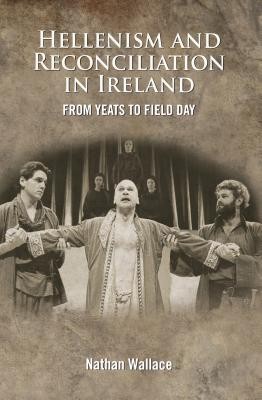
- We will send in 10–14 business days.
- Author: Nathan Wallace
- Publisher: Cork University Press
- Year: 2015
- Pages: 296
- ISBN-10: 178205068X
- ISBN-13: 9781782050681
- Format: 14.5 x 23.6 x 2.3 cm, kieti viršeliai
- Language: English
- SAVE -10% with code: EXTRA
Reviews
Description
This book is a genealogy of reconciliation in modern Ireland. As Seamus Deane has written, reconciliation stands at a nexus between politics and aesthetics in Irish writing, and has therefore often been a vehicle of colonial ideology. This book shows that the term often fits into a pattern that the author calls the "iconography of reconciliation".
This iconography began in the 1810s when Samuel Taylor Coleridge synthesized Edmund Burke's thoughts about Ciceronian conciliatio and Aristotelian ethos with Schlegelian literary organicism. That is, Coleridge identified what Aristotle called "ethical music" with the "balanced" personality of Romantic literary genius itself. Wallace then shows that Matthew Arnold and Edward Dowden adopted this Coleridgean synthesis and used it to make their writings about Shakespeare, Wordsworth and Sophocles (now icons of reconciliation) chime with their writings in favor of the Anglo-Irish Union.
Moving on to the twentieth century, Wallace shows first that Yeats and Joyce contested the Unionist icons and, later, that Conor Cruise O'Brien revived them in his writings about Northern Ireland. Wallace finishes by arguing that Field Day countered O'Brien's "Sophoclean" reading of the Troubles with their own, more ethically responsive icons of Sophoclean reconciliation between 1980 and 1990.
EXTRA 10 % discount with code: EXTRA
The promotion ends in 22d.17:44:41
The discount code is valid when purchasing from 10 €. Discounts do not stack.
- Author: Nathan Wallace
- Publisher: Cork University Press
- Year: 2015
- Pages: 296
- ISBN-10: 178205068X
- ISBN-13: 9781782050681
- Format: 14.5 x 23.6 x 2.3 cm, kieti viršeliai
- Language: English English
This book is a genealogy of reconciliation in modern Ireland. As Seamus Deane has written, reconciliation stands at a nexus between politics and aesthetics in Irish writing, and has therefore often been a vehicle of colonial ideology. This book shows that the term often fits into a pattern that the author calls the "iconography of reconciliation".
This iconography began in the 1810s when Samuel Taylor Coleridge synthesized Edmund Burke's thoughts about Ciceronian conciliatio and Aristotelian ethos with Schlegelian literary organicism. That is, Coleridge identified what Aristotle called "ethical music" with the "balanced" personality of Romantic literary genius itself. Wallace then shows that Matthew Arnold and Edward Dowden adopted this Coleridgean synthesis and used it to make their writings about Shakespeare, Wordsworth and Sophocles (now icons of reconciliation) chime with their writings in favor of the Anglo-Irish Union.
Moving on to the twentieth century, Wallace shows first that Yeats and Joyce contested the Unionist icons and, later, that Conor Cruise O'Brien revived them in his writings about Northern Ireland. Wallace finishes by arguing that Field Day countered O'Brien's "Sophoclean" reading of the Troubles with their own, more ethically responsive icons of Sophoclean reconciliation between 1980 and 1990.


Reviews